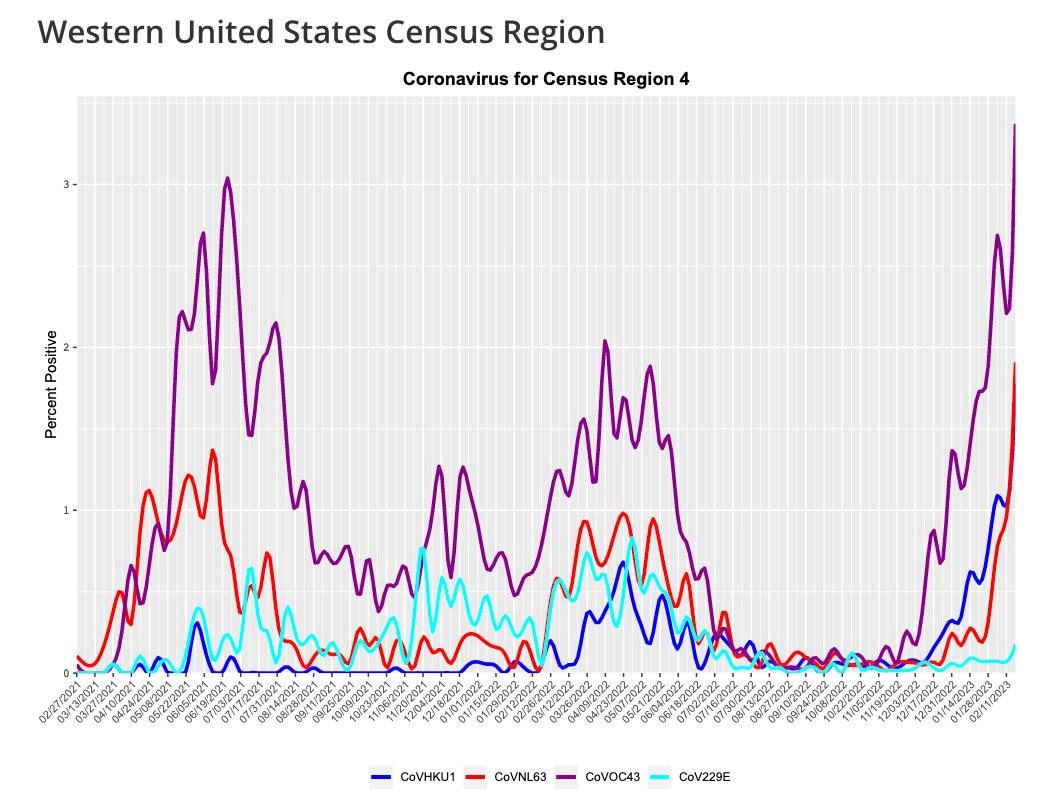Good morning, and welcome to your influenza-like illness (ILI) update. We've got a stable situation yet again across most of the United States, with ILI rates remaining consistent across every age group and nearly every state. Further evidence that the groundhog meteorologists were right.
There are a few areas where we still see some heightened activity. While Puerto Rico saw a brief dip into the medium category, we're now seeing ILI rates climbing back up again, and they've officially returned to the high category.
On the continental U.S., there are three areas that are still seeing elevated ILI activity. In New Mexico, New York City, and Washington, D.C., ILI rates remain in the high category, indicating a greater risk of transmission.
On the bright side, influenza hospitalizations are down, and there’s still not much influenza B activity.
COVID-19 must be reading from the same script as ILI. The last week saw no notable changes in case counts, test positivity, or hospitalizations.
For hospitalizations, Delaware, Washington, D.C. and North Carolina continue to have the highest rates, as they have in the past few weeks. There have been some minor recent improvements in these areas, which is a positive sign.
The stable situation does not mean that COVID-19 has receded. Nationwide, we are currently seen an average of about 300-350 deaths per day.
Activity of the seasonal coronaviruses has now peaked in the Northeastern, Midwestern, and Southern regions of the country. The Western region continues to defy gravity, with test positivity still rising there. The seasonal coronaviruses are one of many causes of the common cold.
As I reported last week, I continue to see signs of increased adenovirus activity. Adenoviruses are yet another cause of upper respiratory symptoms. Some subtypes can also cause pink eye and gastrointestinal symptoms like vomiting and diarrhea. Outbreaks are common in places like college campuses, military barracks, and daycares. Preventive measures are the same as for SARS-CoV-2 and influenza. Masking, ventilation, hand-washing, and avoiding crowded indoor spaces can all reduce transmission of adenovirus.
RSV activity is down.
No news on norovirus, a stomach bug that causes vomiting and diarrhea, but I assume activity is still high (more on that from last week here). Wash your hands with soap and water, and stay home if you’re sick!
Food recalls
The following foods are being recalled because they are contaminated with bacteria that causes food poisoning. Please check your cupboards and throw out any of these items:
New this week:
The Ezricare/Delsam eye product recall has been expanded to include Artificial Eye Ointment due to contamination with a pathogen that could cause blindness. The original recall applied to Artificial Lubricant Eye Drops. (more info, more info).
Reported in the last month:
Various Signature Select Breakfast Bowls, including products containing sausage, egg, potatoes, and more. These items were sold in Nevada and California (more info).
Ready-to-eat sausage and charcuterie products sold by Daniele International, LLC (more info).
There is also a multi-state outbreak of Listeria linked to deli meats and cheeses, but the specific source has not been identified. If you are pregnant, over the age of 65, or have a condition that weakens your immune system, consider avoiding meat or cheese from deli counters. (more info)
If you have food allergies, you may wish to review these FDA safety alerts for foods with undeclared allergens.
In other news
H5N1 influenza remained top of mind for me last week. Cambodia reported two cases of H5N1 last week, one fatal case in a child and another in her father. It is not clear whether the family had a shared exposure (e.g., sick poultry) or whether human to human transmission occurred. Of note, these infections are a clade of H5N1 that is endemic in Cambodia, not the clade that is currently circulating widely in birds.
The Centers for Disease Control and Prevention released estimates of the effectiveness of the 2022-2023 influenza vaccine. In children, the vaccine was 68% effective at protecting against hospitalization and 42% protective against needing to visit an emergency room. Similar protection was seen in adults. Older adults derived slightly less protection, with 39% protection against needing to visit an emergency room and 42% agains hospitalization. These numbers are estimates.
According to a World Health Organization Disease Outbreak News Report, the Marburg virus disease (MVD) outbreak in Equatorial Guinea stands at nine cases: one confirmed, four probable, and four suspected. All nine cases have died, including eight deaths in the community (which I take to mean they did not receive Safe and Dignified Burials). Thirty-four contacts are under follow up. These numbers are the same as what was announced on February 13. The WHO risk assessment is unusually frank:
Based on available information, all nine deceased cases were in contact with a relative with the same symptoms or participated in a burial of a person with symptoms compatible with MVD. At this stage it cannot be ruled out that all MVD cases have been identified, therefore there could be transmission chains that have not been tracked. To date, most of the contacts of the nine deceased cases have not been identified.
This is a high risk situation that merits very close management.







Wish there was more info on the Marburg outbreak. Do you see this as governmental hesitancy or simple bureaucratic breakdown? I'm also interested in seeing more from Cambodia about the human cases of H5N1. I'm concerned we might start seeing a jump, as anecdotal reports of more infections in humans are starting to appear.